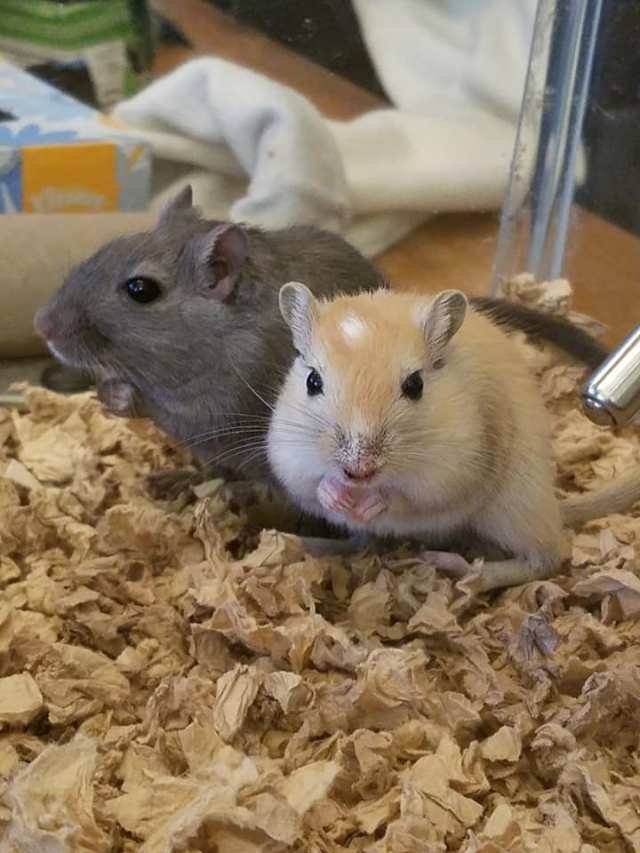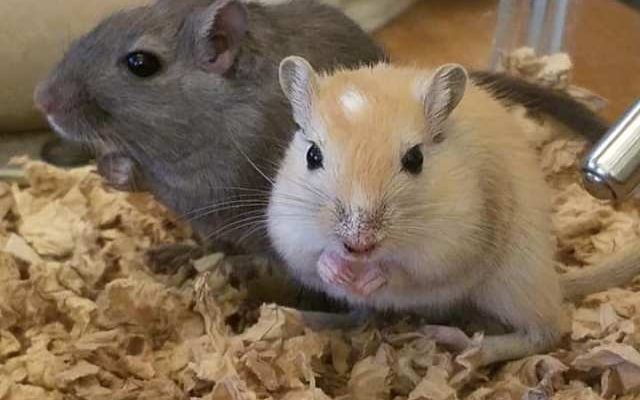
Now, before you dive in headfirst, let’s take a moment to unpack what it really means to breed cream gerbils. Think of it like building a small community where every member has a role and a personality. You’ll need to learn about genetics, proper care, and the best practices for breeding to enhance both the health and temperament of your gerbils. Let’s brew some coffee, sit back, and explore everything you need to know.
Understanding Cream Gerbils
Cream gerbils are a delightful variety of the Mongolian gerbil, a pet beloved for its friendly nature and playful antics. Their creamy fur can range from a light ivory to a deeper shade, making them visually striking. You might be wondering what makes them so special. It’s not just their looks; it’s also their personality. Cream gerbils tend to be curious, social, and, let’s be honest, a bit mischievous.
When you’re breeding cream gerbils, understanding their genetic background is key. The cream color comes from specific genetic combinations, so knowing the lineage of your gerbils can help you predict the outcome of future litters. This knowledge will also guide you in selecting breeding pairs that maintain or enhance the cream coloration and health of the offspring.
Moreover, knowing their standard behavior is crucial. Are they skittish or bold? How do they respond to handling? These traits can influence how well they adapt to breeding and being around other gerbils. A well-adjusted, social gerbil makes for a happier breeding experience.
Setting Up for Breeding
Before you even think about bringing two gerbils together, you need to set up a proper breeding environment. This means ensuring that their habitat is safe, comfortable, and conducive to breeding. Here’s what you’ll need:
- Spacious Cage: Choose a large, well-ventilated cage (at least 20 gallons). Gerbils love to burrow and explore, so include bedding like aspen shavings or shredded paper.
- Hiding Spots: Provide tunnels or small houses. This helps reduce stress and gives them a secure place to retreat.
- Food and Water: A balanced diet is essential. Look for high-quality pellets and supplement with fresh veggies and occasional treats.
An environment rich in stimulation will not only help with breeding but also keep your gerbils happy and healthy. Make it a cozy space where they can thrive together.
Choosing the Right Breeding Pairs
Choosing the right breeding pairs is a vital step in the process. It’s not just about putting two gerbils together and hoping for the best. You’ll want to consider the following factors:
- Health: Ensure both gerbils are healthy and free from genetic disorders. A quick vet visit can help determine their overall health.
- Temperament: Pair gerbils with similar temperaments. A calm gerbil might not work well with an overly aggressive one, which could lead to fighting.
- Genetics: Understanding the genetic background of each gerbil helps predict the color and health of the offspring. Aim for a mix that supports the cream coloration.
Here’s the thing: successful breeding is as much about the gerbils’ personalities as it is about their genetics. You want them to get along and vibe well. If they spend their time bickering, it’s not just stressful; it can lead to health issues down the line.
The Breeding Process
Once you’ve got your pairs selected, it’s time to introduce them. It’s best to do this in a neutral territory to avoid territorial disputes. After they’ve settled in together, you can expect courtship behavior, which usually involves chasing and some gentle nipping. It’s quite a sight!
Keep an eye on them for signs of mating, which can happen quickly. After successful mating, females typically gestate for about 24 days before giving birth. You’ll want to prepare for the arrival of the babies by making sure your gerbil home is well-stocked with food and water since the mother will need extra nutrition during this time.
After the babies are born, give the mother some space. She’ll be quite busy tending to her new family. It’s essential to keep the environment calm and secure until the babies are old enough to explore on their own.
Caring for Newborn Gerbils
Caring for newborn gerbils can feel overwhelming at first, but it’s also incredibly rewarding. Right after birth, it’s crucial not to handle the babies for at least the first two weeks. The mother needs to bond with her pups and ensure they’re nursing well.
You might notice the babies are hairless and incredibly tiny—like little jellybeans! However, they grow quickly. Around two weeks old, their fur will start to develop, and they’ll begin venturing out of the nest.
At this stage, ensure the mother has plenty of food and water. You can introduce some high-protein treats to her diet, which helps in milk production. As the pups grow, you’ll want to start socializing them gently. Handling them often, but carefully, will help them become friendly pets.
Common Challenges in Breeding Cream Gerbils
Like any pet, breeding cream gerbils comes with its own set of challenges. Here are a few you might encounter:
- Fighting Between Pairs: Sometimes, gerbils may not get along, especially during the mating process. Watch for aggressive behavior and be prepared to separate them if needed.
- Health Issues: Keep a close eye on both the mother and the babies. Any signs of illness should prompt a visit to the vet.
- Overpopulation: A litter can quickly grow, leading to more gerbils than you intended to manage. Have a plan in place for rehoming them responsibly.
Addressing these challenges early on can help ensure a smoother breeding process. Honestly, the key is being prepared and staying observant. You might be surprised at how much you learn along the way.
Final Thoughts on Breeding Cream Gerbils
Breeding cream gerbils is an exciting venture, but it’s also a big responsibility. From understanding their needs to providing a nurturing environment, you have a lot to consider. Remember to focus on health, genetics, and a loving atmosphere, and you’ll be well on your way to a successful breeding experience.
As you embark on this journey, take your time to enjoy the process. Each gerbil has its own quirky personality, and watching them grow is a joy unlike any other. Take it step by step, and before you know it, you’ll not only be a knowledgeable gerbil owner but also a proud breeder of beautiful cream gerbils. Happy breeding!

